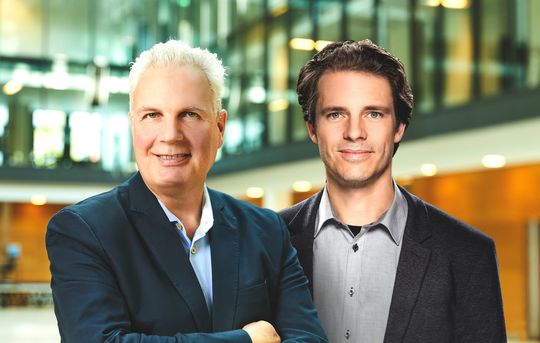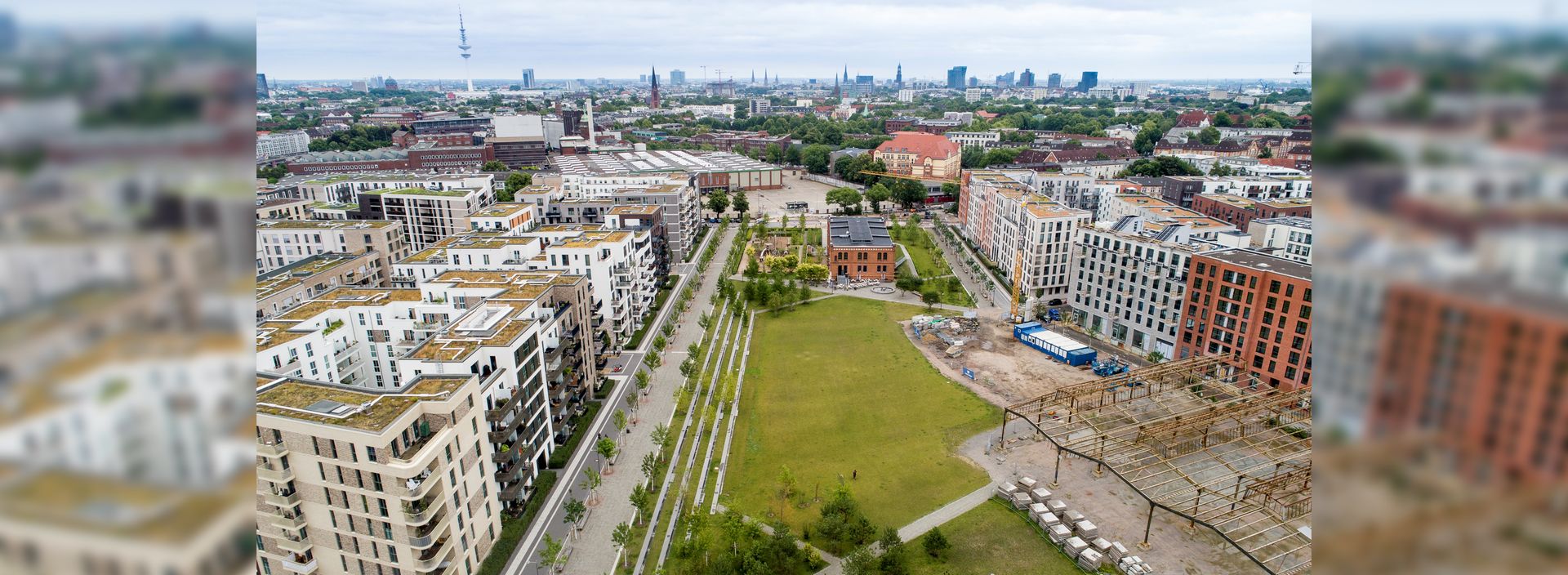
13.10.2021
Urban Development: The Future Belongs to Mixed-Use Concepts and Urban Neighborhoods
Diverse, compact, sustainable: The mixed-use city based on the classic European model is experiencing a true renaissance. The future belongs to clever mixed-use concepts. In our blog conversation, Klaus-Peter Hesse, Director City Development & Acquisition at ECE Work & Live, and Valentin Hadelich, Head of Department Creative Design - Urban Planning at ECE Group Services, discuss what makes a good mixed-use property, why resilience is important for a neighborhood, and what hidden potential lies dormant in our cities.
What is mixed use?
Klaus-Peter Hesse: Mixed use is the result of a process of urban development policy. Cities have always been fields of experimentation and have only been successful if they have developed away from monostructures into spaces of experience. This also includes analyzing competing uses and, if necessary, reallocating rights of use. Public space is there for everyone, and where there is a lack of change, there is stagnation. In view of the strong population growth in cities, the "Athens Charter" was long considered the best urban planning solution. It provided for a separation of living and working. This idea is now outdated. Today's guiding principle is the "Charter of Leipzig": the city of short distances, the mixed city, the urban city, the sustainable city. This world of thought has led to political consideration of how this guiding principle can be reflected in terms of construction planning. The urban area was introduced as a further type of area. This was also because cars and factories emit less noise and pollutants. What used to necessitate the separation of uses is no longer as relevant today and, moreover, is technically solvable. In addition, people are willing to accept certain inconveniences for urbanity. All of this leads us to think in a more compressed, urban and thus mixed way. This leads us to mixed-use concepts that combine a wide variety of uses and offers.
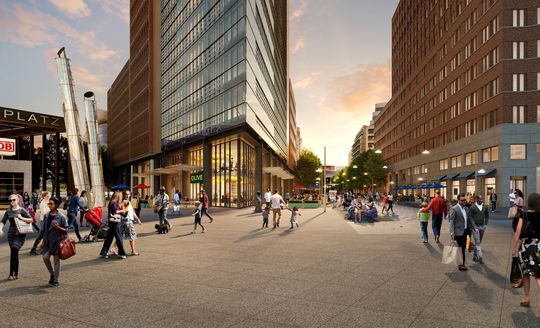
Potsdamer Platz Berlin
Valentin Hadelich: The European city is generally mixed-use. At least those cities that were not completely destroyed in the Second World War. In Germany, however, following the Athens Charter, many inner cities were rebuilt as mono-functional areas after the war. There, the residential share has shrunk considerably and in some cases has been completely displaced by commercial uses. If we want to have frequencies, i.e. people, in the city center and in both old and new neighborhoods, and at the same time aim to reduce traffic, then people must once again live where they shop and work. That's another reason why Mixed Use is a relevant topic for us. The term Mixed Use originally comes from the USA. The New Urbanists there demanded 25 years ago that the mixed-use city based on the old European model should once again be the goal. If the 15-minute city is to find its application as a new guiding principle for more quality of life and sustainable urban development, then we must consider and implement the necessary building blocks in planning at the neighborhood level.
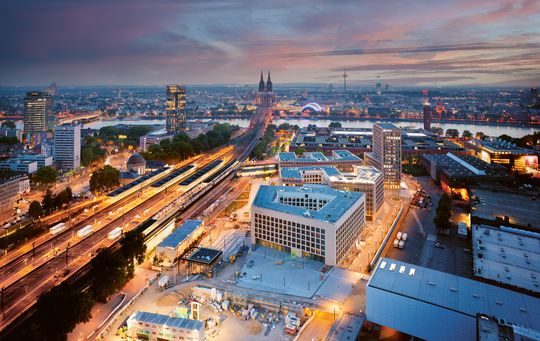
MesseCity Köln © Ingo Fischer
How many and which uses make a good mixed-use property?
Hadelich: The answers vary widely. City planners or urban developers naturally like to see as many uses as possible in one building. As a rule, it's about active first floors that stimulate the street space, about several uses on the upper floors, about public facilities, and so on. The perspective is that of an idealized city. However, in my opinion, it cannot be applied to the entire city. There must also be buildings in which people simply live or work. An investor, on the other hand, looks at such an issue in a completely different way. He looks from the perspective of the exit, the management and the fund or vehicle where the property is to be resold. Of course, there are now also funds that deal specifically with mixed use and also buy only mixed-use projects. However, these are not yet so large in Germany. In Great Britain or the USA, the topic is already much more advanced than here. However, project developers and family offices that hold their properties for the long term are changing the way they look at the issue. The environment is crucial for the long-term success of a property. That's why we also attach great importance to long-term development opportunities in our neighborhood developments.
Hesse: In view of the transformation process accelerated by Corona, politicians are considering what can be done legally to facilitate and speed up planning and approval procedures for conversions. The Building Use Ordinance is also once again under scrutiny, as it stipulates how the type and extent of building use are to be implemented. In addition, there are ideas to introduce a new type of inner city area to strengthen and convert the inner cities. Everyone wants more housing in the cities and neighborhoods. A first important step in this direction would be to finally tackle the Technical Instructions (TA) on noise and allow more urbanity. Urban repair and redevelopment, as well as the necessary new forms of use, can only be achieved in a timely manner to a limited extent with the existing toolbox.
Is a mixed-use-building already a neighborhood?
Hadelich: A neighborhood is actually always a larger context. How big it has to be is debatable. But an area should already come together in which public space also plays a role, in which streets, squares and parks form the spatial framework in which the buildings develop. Where different uses come together and are not just stacked in one building, but stand next to each other. As I said, it is not the case that all buildings must always have several uses, and then a good city is automatically created. Former Federal Minister of Building Klaus Töpfer once put it this way: "A good building in a bad neighborhood is worth nothing. A bad building in a good neighborhood, on the other hand, can work very well." In other words, the neighborhood is the decisive quality criterion.
What role does resilience play for the neighborhood of the future?
Hesse: I think the topic of resilience is always part of a neighborhood discussion - not only because of Corona, but also with a view to climate protection. We need to use the transformation energy that has now emerged to also undertake alternative forms of mobility, new living and working concepts, and a new orientation for our retail properties. The floods in the recent past have shown how vulnerable our cities are. We will therefore also have to talk more about more green in the city and also about water storage and use in spaces with a high quality of stay and multifunctionality. And we will have to talk about attractive public spaces and their more active use in a neighborhood, however the squares will then be designed and have to look. But using public space even more intensively will play a very decisive role in the future for a functioning neighborhood and for quality of life. We need innovative concepts and more transparency in the public space for the traditional retail trade, which continues to be important for the neighborhoods.
Potsdamer Platz Berlin
Mitte Altona
Milaneo Stuttgart
Sustainable mobility
What other advantages do neighborhoods offer in terms of sustainability and ESG?
Hadelich: Theoretically, neighborhoods offer enormous advantages that we could exploit if we were to make an integrative design. However, you quickly come up against the well-known hurdles, some of which have already been mentioned, and which are often also of a permitting nature. As soon as dependencies arise with other buildings, for example in supply, energy production, etc., this does not have a positive effect on the value. Nevertheless, I believe that the neighborhood form is the only sustainable way to develop a city or to construct buildings. Because only the neighborhood offers the chance to avoid traffic through short distances and to build a resilient city in the long run. I am convinced: this is actually the term that is significantly more valuable than the topic of sustainability. When you think about resilience, it's about the ability of a neighborhood to continue to exist in the future. But not necessarily in the form we know it now, but in some form. It should be able to develop and change. But it should continue to exist and remain valuable. The term comes from forestry: the forest can change. But it should remain a forest, it must not die. And if you can do that with a district, then you are more sustainable than anything that a single building can achieve. Because you're building a district that will potentially still be there in the next 300 years. And you can't think more sustainably than that.
Hesse: The most sustainable buildings in the existing neighborhood are those that are not built. We should therefore regard it as our most urgent task to use existing buildings, conserve resources and keep a closer eye on the life cycle of buildings. That's why in the future we don't always have to bring in the wrecking ball. By the way, the keyword "gray energy" is playing an increasingly important role here. That's why the mixed-use building should not be the sole focus of attention; instead, it must be examined in relation to the neighborhood. The Building Energy Act contains initial approaches to this. In a neighborhood context, there are many other ways of achieving more efficient use of energy in terms of climate and energy policy. For this to succeed, it will be crucial that we have active neighborhood management and that the state relaxes its legal restrictions and requirements.
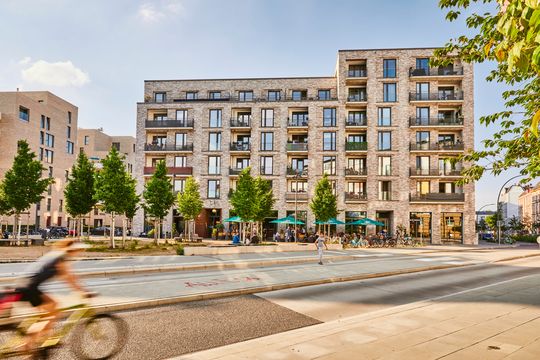
Mitte Altona
Hadelich: And if you think in terms of neighborhoods, you can of course also think about decentralized energy storage. There are exciting concepts - for example, the topic of e-mobility: How do you catch the generation peaks, and how do you cover the lows? Keyword: networking of systems. There are a lot of good approaches, all of which are in development right now, and they always come back to the fact that you have to think on a larger scale. Whenever you just look at the individual building, you're already at a deficit because you can't draw all the value you could from a neighborhood.
Hesse: I would like to address two other issues that are important for a functioning neighborhood and for urbanity. Neighborhoods gain considerably in quality of life if they are not just monostructural in terms of their social structure. If, for example, only luxury apartments are offered to owners who hardly spend any time on site, then the neighborhood has a problem. In other words, you need a healthy mix of all population strata for a neighborhood to function. That's why we as ECE implemented the so-called one-third mix at a very early stage and voluntarily committed ourselves to realizing a certain share of publicly subsidized apartments in the case of Mitte Altona in Hamburg. In addition, we also offered a mobility concept at Mitte Altona that is much more than just cars in underground garages or neighborhood garages. In other words, we looked at the functionality of a neighborhood at a very early stage. And this includes mixed social structures and a clever mobility concept that no longer thinks mobility of yesterday, but mobility of tomorrow.
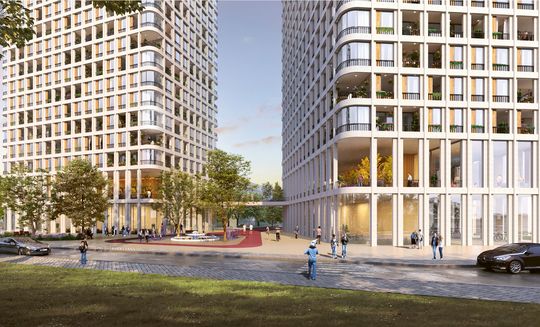
Living at the Stern-Center in Potsdam
Living at the Stern-Center in Potsdam: Could this also become an example of a mixed-use neighborhood?
Hadelich: The buildings themselves are not mixed-use in the traditional sense. They are purely residential buildings with communal areas for the residents - so-called amenities with a gym, coworking and lounge. These are not public uses. But with this project, we are contributing to a mixed-use neighborhood overall. In addition to the existing shopping center and the existing residential context, our project will add a new component in the future, but one that addresses a different target group in order to bring in a social mix to the neighborhood. In other words, we are contributing to a mixed-use neighborhood in various ways, even if the project itself is monofunctional.
